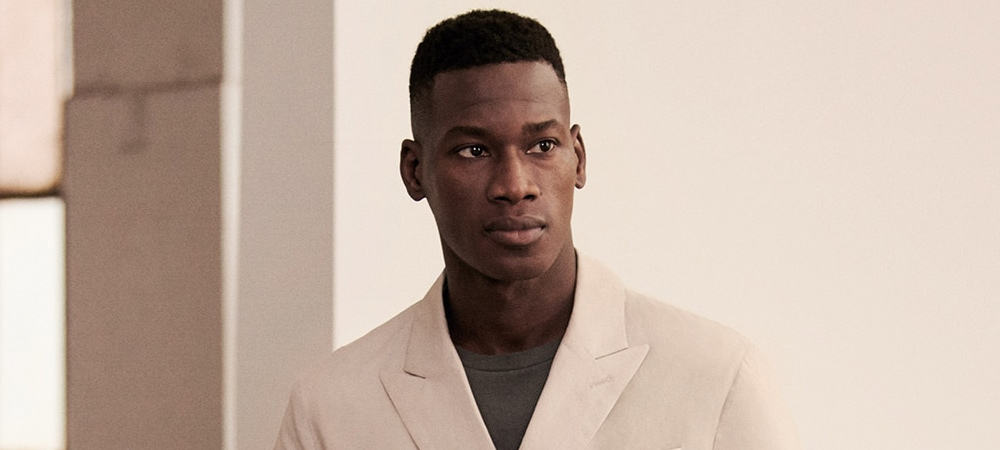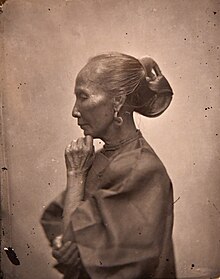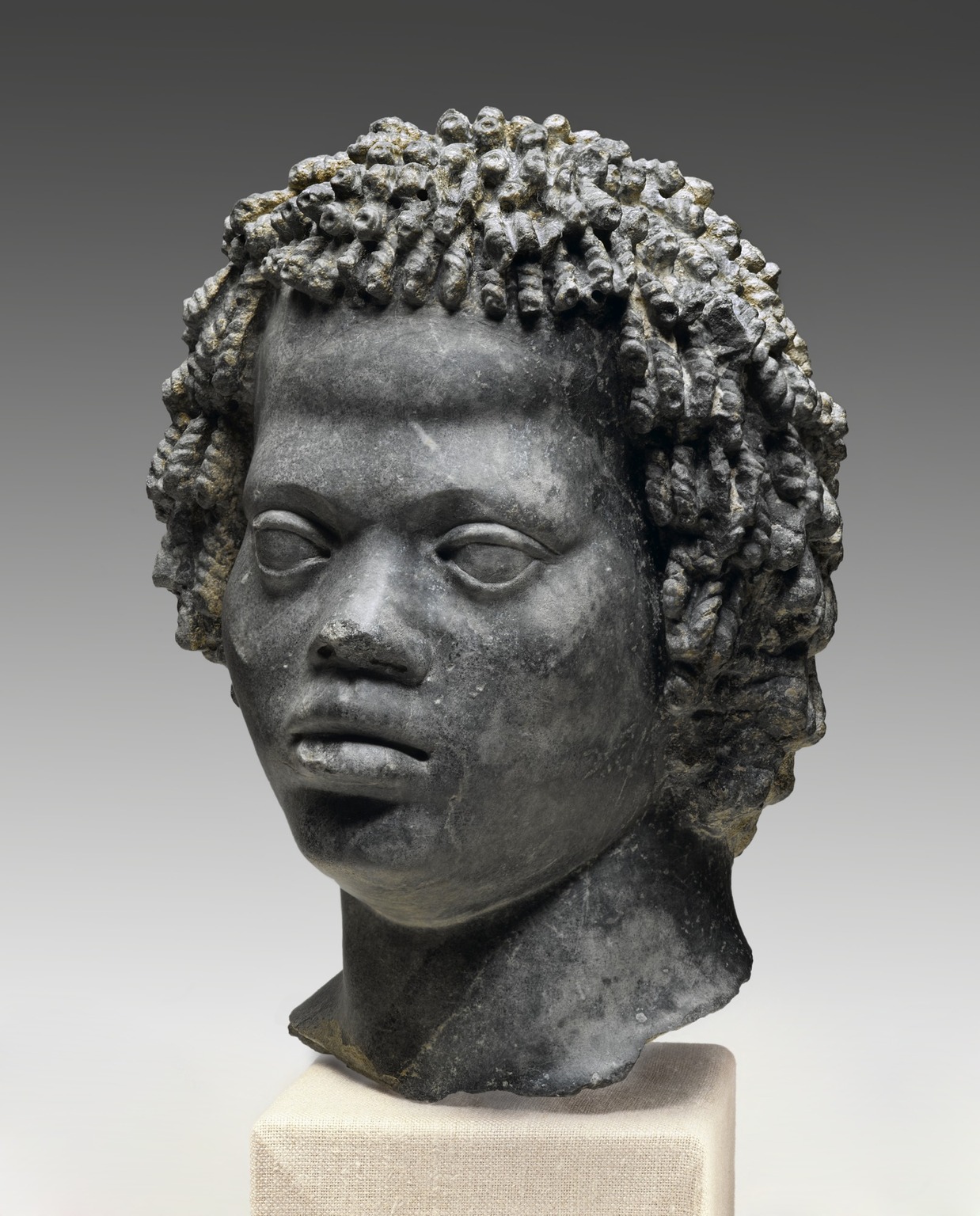




Hair (Part 1: The History of Hair)
Hair is part of the world society in general. People wear it, use it, and talk about it. Now, it is the perfect time to mention a lot of information about this subject. From its basic level, hair is a protein filament that grows from follicles found in the dermis. It is found in mammals. As for us, humans, hair is found in many areas of the human body. Alpha-kertain is a major part of hair. Hairstyles and cultures dealing with hair are diverse and very old. For thousands of years, we have used hairs in cornrows, fades, and other ways. Barber shops and beauty salons are places where men, women, and children feel relaxed, talk about the issues of the day, and allow their creative spirits fly in expressing their hair types. Many people wear their hairs for many different reasons out of religion, culture, age, and other factors. Even in our generation, we have some ignorant people that want to demonize women with a certain type of hair. You won't find that judgment here. We believe that whether a person has natural hair or weaves, that human being is equal and is worthy of dignity plus respect. I am an inquisitive person by nature, so studying about hair types, history, pigment, and other matters are important. Hair found found underneath the skin and grows from the dermis out. The shaft is the filmentous part that extends above the skin. Hair fibers have the cuticle, the cortex, and medulla. The beauty of hair is that we don't make apologies for it. Also, hair is an way that people can be creative and acknowledge our own sense of self-expression. People, who are bald, have value too. There is no such thing as good hair or bad hair. Hair is just hair. The more folks realize this truism, the better off the world will be.


Ancient Times
Hair has been worn in many different ways in the ancient world. They have been shown in diverse ways based upon social class, marital status, age, racial or ethnic identity, political beliefs, and sex. The Venus of Willendorf image from about 30,000 years ago showed hair braiding. The image is a figurine of a woman from the Paleolithic Age. The Venus of Brassempouy counts about 25,000 years old and indisputably shows hairstyling. Razors were used by the Bronze Age. Some men used them (not on a daily basis), because the procedure back then was seen as unpleasant and required re-sharpening of the tool which reduced its endurance. In ancient civilizations, the hair of women was regularly worn in an elaborate and carefully dressed ways. Many women colored their hair, curled it, and pinned it up in a ponytail, etc. Some have used their hair in waves and curls using wet clay (which was dried in the sun and then combed out or used a jelly or quince seeds soaked in water. Some used curling tongs and curling irons of many kinds).
In Ancient Egypt, hairstyles were diverse. They differed on the basis of social group, age, and wealth. Men and women wore shoulder length hair. Many people were shaven if they were young adults before of age. Some left a small curl in the side of their head called the lock of youth. Young girls wore plaits, braids, and ponytails. Older men and women wore wigs. The wig helped protect the Egyptians’ hair from sun damage. Women from the Old Kingdom wore shorter hairstyles and longer ones during the New Kingdom. Some women used flowers like the lotus blossom and linen ribbons on their hair. Diadems were found on the hair too. Poor people have berries and petals on their hair. The dying of hair was common place. Many poor women used the veil. Men kept their hair short or shaved. The ancient Greeks pulled their hair into a chignon style. Some braiding existed. There were headbands. Some used gold powder on their hair. Men wore short hair or wore beards. Greek soldiers readily didn’t have beards.

In the Vedic Age of ancient India, many Indians had locks, shaved heads, and buns. Some men had braided hair. Hair in ancient China depended on the age of the woman and her marital status. Women wore their hair long. Girls had their hair braided if they were unmarried. Married women had more loose hair. Japan hairstyles had similarities and differences to the Chinese hairstyle. In Africa, many cultures wore their hair differently. Masai warriors braided their hair. Mangbetu women have a different kind of hairstyle as they braid their hair into a cone-shaped basket (creating a crown) which is held in place by bones shaped like needles. The Miango tribe had simple ponytails that were covered by headscarves. But these styles represented different meanings to each tribe. Dyed hair was commonplace in sub-Saharan Africa. Native Americans had diverse hairstyles too. Many tribes shaved their heads. There was the tonsure. Women would decorate their hair with jewelry, beads, and feathers. Many men and women would have a simple flowing hairstyle and would sometimes paint horizontal stripes in the center with bright colors. Southeast tribes such as Navajo and Pueblo would tie their hair behind their heads and twist into what is known as a chongo (also worn by men). Hopi people had diverse hair styles too.


The Medieval Period and the Early Modern Age
During the Middle Ages, many men and women wore their hair down. Many women wore veils, kerchief, and a snood. The age of the Renaissance saw turbans, caps, braids, plaits, and other hair styles. Prior to 1450 in many places of Europe, barbers also performed surgery. This was due to the law passed by Pope Alexander III that forbade clergymen of shedding blood. Barbers regularly performed bloodletting and minor surgery, administered herbs, and later pulled teeth. In 1450, a law is passed that separates barbering and surgery. After this, only surgeons could perform surgery and barbers could cut hair. By the 1700's, Legros de Rumigny was a famous hairdresser of France.
During the 18th century, many wealthy men wore powdered white wigs even in early America as shown by Jefferson and Washington. Women wore curled hair.


The Modern Age (1945-2000)
The wealthy had extravagant hairstyles. The Victorian hairstyles were very conservative. Bobs were common during the Roaring Twenties. Some used the conk like Cab Calloway, who was a famous entertainer. By the 1930’s and the 1940’s, women dominated the fashion style of clothing and hair. This time saw Bette Davis, Katherine Durham, Ethel Waters, etc. The 1950’s saw a massive amount of conservative hairstyles after World War II. Many men and women wore straight laced shirts, pants, and dresses. The 1960’s was a cultural revolution. Complex hairstyles existed like the mop tops, the Sunday’s best, and the Afro were popularized. By this time, many African Americans rejected the conk and wore braids, the Afro, etc. as a means to love their black African heritage. The 1970’s saw hair styles change. Many men and women wore their hair long. The Afro hairstyle was very popular. Many women wore curls and punk started to show their influence on hair and fashion by the end of the 1970’s. The 1980’s was a time of diversity and excess. People as diverse as Cyndi Lauper, Jody Watley, Madonna, and Michael Jackson wore jherri curls, curls, colored hair, etc. During the 1990’s, hair and fashion was diverse. Hair like boxes, braids, curls, grunge looks, the shaving of hair, etc. was common place. Michael Jordan’s shaved head was popular and the hair styles of TLC were purely 1990’s style.

The 21st Century Innovations
One of the most important parts of the history of hair is the growth of the natural hair movement among women of black African descent in the 21st century. This movement has always existed for centuries and thousands of years. Yet, during this time, we see more social media, programs, and other movements promoting it. For the record, there is nothing wrong with anyone getting a weave. We know people have weaves if they have cancer, or if they just want to express themselves. This is about showing further light on the natural hair movement in our generation. There is nothing wrong with natural, coiled, kinky, or tight curly hair. Many people now wear hair twits, braids, and locks. Some people wear natural hair for political reasons and some wear it for non-political reasons. More people are realizing that the beauty of hair is that it can be displayed in diverse ways. That is enough. Natural hair also is beautiful and valuable in the Universe. The critically acclaimed documentary from 2005, My Nappy Roots: A Journey Through Black Hair-itage outlined this issue in great detailed. My Nappy Roots chronicled over 400 years (and 200 hours of footage) of Afro hair culture starting in Africa through the middle passage, reconstruction the creation of the Black hair industry to the year 2008. This documentary became the definitive film on the history, culture, and economics on Black hair. The urban story postulated the word 'nappy' derived from the word 'nap', which was the name of the small cotton balls inside of a cotton plant. The word 'nappy' was born because it resembled the texture of unkempt Afro-textured hair.
In an effort to be more acceptable socially, some people believed in the myth that it would be desirable to have straight hair like the dominant culture. This historic film has never been publicly released. In the 21st century, more people are using more organic hair products. In the 21st century, countless scholars from blogs, books, and other social media accounts have shown the culture of hair style like Black Girl Long Hair, Naturally Curly, Afrobelle, South Africa’s My Fro and I, etc. With the popularity of natural hair movement, hair care suppliers have seen a rapid decrease in the purchase of relaxers, the harsh chemical hair straightener. An industry that was once worth an estimated $774 million, relaxer sales have gone down 26% over the last five years, 2013 numbers report. Relaxer sales have fallen to 38% between 2012 and 2017. Sales are estimated to decrease to 45% by 2019. Also, life is not without drama. There have been many controversies where many people have used racist and offensive statements about the hair of black women especially. One example is when Giuliana Rancic said that the then teenager Zendaya Coleman’s hair smelled of “weed.” Many black girls and black women (from schools to various occupations) have been discriminated against because of wearing their hair in locs or being natural. Even black people had to fight to make sure that the Armed Forces didn’t discriminate against black people for wearing their hair in braids or locs. It is important to never support those who degrade black people. There is the double standard when non-black people like Bo Derek and Kim Kardashian can wear braids and it’s called groundbreaking by mainstream society (but a black woman wear hair in the similar fashion gets disrespected by many people). Erykah Badu, Alssa Maiga, Lupita Nyong’o, Beyoncé, Janelle Monae, Solange, Inna Modja, and other Sisters have worn their hair with braids, natural, and other styles with power.



Conclusion
For the time of millennia, hair has been part of our existence as human beings. It is a reflection of our humanity. Also, it has been shown in a myriad of ways. More and more individuals are seeing the glory of diversity as it pertains to expressing our hair. Hair is just hair. The more people recognize this fact and treat people with dignity and with respect, the better off the world will be. When you see the hairstyles of civil right activist Ida B. Wells and entrepreneur Madam C. J. Walker, you witness how hair makes a statement about someone’s personality indeed. During the ancient times, someone’s hair would indicate wealth, age, religion, and social status in various communities. Today, hair signifies more diverse messages that someone wants to express beyond just social status. Not to mention that hair is about liberation. We don’t have to confirm to European standards of beauty. We can confirm to our own standards of beauty and self-expression. The myth of black inferiority and the myth of white superiority (which includes many non-whites putting white people on high pedestals in the sense of submission to the status quo) has been ingrained in not only racist white people but in the minds of some black people with self-hatred too. It is important to resist oppression in any of its manifestations. That is why the hi-top fade, the Afro, the afro puffs, dreadlocks, bantu locks, Caesar, and other hair styles outline what our existence is all about. We are never monolithic culturally, socially, or otherwise. The more that we outline our creative energies, the more enriched the world truly is. Whether someone wears their hair long like Ayesha Qurishi from Sweden to those who wear their head shorter like the Afro-Brazilian politician Luiza Helena de Bairros, our freedom of expression is always sacrosanct.
By Timothy
No comments:
Post a Comment